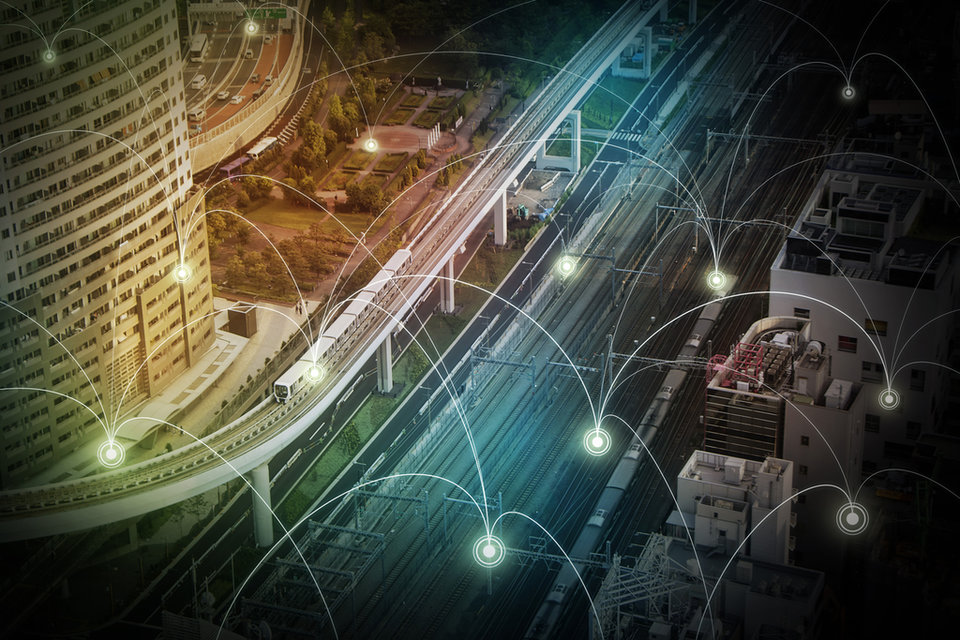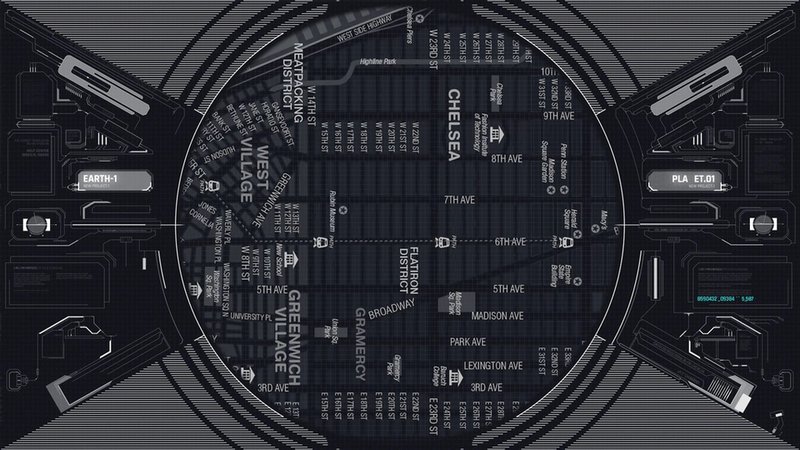AEAs work alone or together to solve complex problems, including those facing the transport sector

Joshua Croft, Fetch.AI ecosystem coordinator and software developer
Smart move: Autonomous Economic Agents explained
The Cambridge-based blockchain and AI start-up Fetch.AI specialises in Autonomous Economic Agents (AEAs), independent digital entities that represent themselves, devices, assets, services or individuals. AEAs work alone or together to solve complex problems – including those facing the transport sector.
“The technology being developed at Fetch will be most useful in ecosystems with tons of data that largely goes underutilised, a problem currently experienced in several sectors including travel and transport,” explains Joshua Croft, the company’s ecosystem coordinator and software developer.
“An AEA is a digital representative that understands your intentions – your travel destination, for example – as well as your preferences, and can navigate the complexity of transportation choices intelligently on behalf of its owner, or itself. It has the autonomy and authority to get things done.
“These intelligent agents ‘breathe economic life’ into machines, providing them with the ability to look after their own affairs.”
The logic is that today’s large, multifaceted transport, energy and healthcare systems are proving too difficult to manage efficiently from the top down, and what is needed instead is a ‘bottom-up’ approach to AI, one that allows intelligent software such as AEAs to manage the complexity for us.
“It’s the goal of constructing a general purpose digital intelligence that can perform any task that a human can,” says Croft. “Many researchers call this Strong AI, whereas the AI that we use today is Narrow AI: it has great ability in a narrow, specific field. Fetch turns a lot of this upside down and enables large populations of agents to combine their smaller pieces of knowledge and intelligence towards a grander, collective intelligence that benefits all users of the network.”
Safety, maintenance and consumer empowerment
Fetch claims this collective intelligence is ideal for managing complex systems with multiple moving parts, such as the rail network: “Like getting the plates to spin themselves,” as Croft describes it.
For example, safety decision-making at level crossings could be improved by equipping gates with AEAs able to digest inbound information from sensors connected to the internet of things (IoT).
Part of the challenge is getting very specific data from sensors to where it is needed at any moment in time. Equipping each one with an agent with machine learning capabilities and hooking them up to the Fetch network would allow the company to ‘make a match’ with rail companies or third parties that require that information. In addition, Fetch helps assets to better manage themselves.
“This can be as simple as a ‘thing’; imagine a rail carriage, telling you where it is, or a bathroom lock that is no longer operational,” Croft explains. “Today, managing and keeping track of assets is a complex task in industry with billions of pounds tied up in infrastructure. Wouldn’t it be better if those assets could tell us where they are?
“Not only do they know where they are, but what they can do and where they should be. Allowing them to be able to talk amongst themselves and to communicate important information to their stakeholders under their own initiative is potentially transformational when it comes to asset utilisation and maintenance.”

The promise of autonomous agents for consumers is also significant. During a typical multimodal journey, passengers may need to consult several apps, investing the time and energy before making a decision about which route to take. If things go wrong, they have to go through that process again.
“In a Fetch world, an agent could live on your smartphone, learning and studying your preferences for travel over time,” says Croft. The agent would then be able to proactively go out into the Fetch network, gather the specific data you need for your journey, and deliver tailored route options. You’d select one and the payment and booking would be handled automatically by the agent.
“Agents come into their own when things go wrong. They can alert you and take a real-time decision about possible onward options, as well as ‘mix context’ by not only including transport information, but also weather and a host of other data. Your agent may advise you to take the second-longest route because there is a strong possibility a specific line will be closed due to bad weather. Agents are continuously learning from past events and real time information to best serve and predict.”
“Also, by dividing the work among many agents, we get scale and robustness, as well as the flexibility to adapt rapidly to changing circumstances without the need for substantial restructuring.”
An AEA can navigate the complexity of transportation choices intelligently on behalf of its owner
Safety decision-making at level crossings could be improved by equipping gates with AEAs
Joint enterprise: Fetch’s work with the Railway Industry Association
In Fetch’s brave new world, everything from people to cars will be embedded with agents able to interact and transact with one another autonomously. For example, each household appliance could have an AEA capable of obtaining the best price for running a wash cycle or charging an electric car.
Like so many other digital solutions that propose is to replace or augment human decision-making, I find the concept of AEAs slightly alarming. However, I needn’t worry just yet; Croft says so-called ‘Artificial General Intelligence’ is “a mammoth task and we are a long way from achieving it.”
Fetch recently joined the Railway Industry Association (RIA), the industry body that represents the interests of more than 230 suppliers to the UK rail industry to Network Rail, developing technical strategies, standards and innovation programmes to improve how rail infrastructure is managed.

“Partnering with the RIA is an important way to build relationships with the UK rail sector so that rail travel becomes quicker and easier for passengers, and also provides efficiency gains for operators,” states Croft.
“Representatives from Fetch.AI will join the RIA’s special technical interest groups. The objective is to build relationships that explore the application of the Fetch.AI Smart Ledger and AEAs to various areas of the UK’s rail infrastructure.”
What Richard Trevithick would make of AEAs is anyone’s guess, but 200 or more years after steam locomotives pushed the boundaries of what was possible in rail innovation, the new generation of digital technologies are ready to drive the industry towards new, as yet unknown, destinations.
